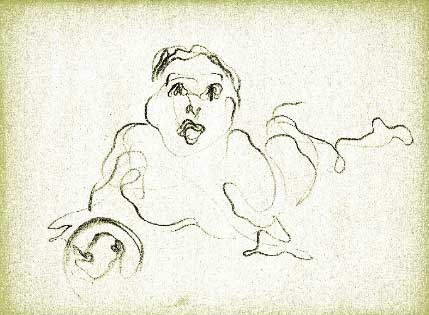Fine
Art Drawing Techniques
These
pages are designed as an information center for those viewers
who are creating or want to create their own art projects.
The tools and the techniques for each type of art project:
drawings,
paintings and preparatory designing, working drawings for
craft projects such as quilting, tapestry weaving, three dimensional
constructions combining painting and sculpture will be discussed.
Some viewers may be beginners, and for others who are more
experienced
but are still learning about their chosen artwork.
Drawing
techniques are fundamental to any artwork. There
are many drawing methods including pencil, brush, fingers,
and sticks in black
on white or white on black [reverse drawing], and there are
a number of tools that can aid the execution of these techniques.
Tools are
the first requirement, then there is a choice of surfaces
upon which to work, depending on the desired use.
Necessary
Tools for Drawing
Pencils
A
selection of artist's pencils with different degrees of softness
and hardness.
A typical choice is 4H, 2H, HB, 2B, 4B and 6B. There
are about 9 different
H to B pencils, but a basic 2H HB and 2B will work
for beginners.
There are two types of pencils: Bound in wood that
must be sharpened in some sort of sharpener,
and automatic
pencils which take individual leads that can
be advanced as needed without sharpening. [I use these most
of the time,
as the points are much finer and are always sharp.]
Pens
Also
available in a selection of sized tips, some refillable and
some with cartridges that can be used as refills.
Be sure to get pens with archival
india ink that
won't fade over time. Felt tipped pens are notoriously
not archival by exposure to normal light. This is true of colored
inks as
well. Check label. The only ink to use with brushes or steel
tipped pen points is India Ink and check the label to make
sure that it is light
fast.
It is easy
to dilute with
water if you want grey lines or tones. Use an eye dropper.
Brushes
Sable
brushes are the best but expensive and require care and
moth protection. Modern synthetic ones work well, but choose
short
handles rather than the long handled painting brushes. A
selection of sizes
from fine to
coarse is ideal.
Oriental brushes with bamboo handles are wonderful
to use, but require practice.
When
using ink or paint brushes must be washed carefully. First
with laundry soap, then
with hand soap and finally
clear water.
Do not
leave brushes
in a glass with the points at the bottom, they
acquire a permanent curve, but lay them
in a shallow dish with a bit of water to keep
them moist while you work.
Sticks
and other instruments
Sharpened
sticks can be used as well as fingers. If you're squeamish,
use plastic gloves or finger cots
to protect
your fingers. Use cotton,
felt, cotton
cloth, etc.
or found materials. Use your imagination!
Papers
and other surfaces for art works
For
sketching and planning
I
use computer paper for throw-away works. However, in recent
years I think twice before using
it as it deteriorates,
drys
out and
turns yellow
or
fades. So economizing
may not be the best idea. [I have
sketches done in 1964 of my son when he was 2 and crawling
that have
turned
yellow.
The only
way
I can save
these sketches
is to scan them and print them out
on archival papers. But something is lost in translation]
There are computer
papers
that are made
for documents that must
be saved. A 32 lb resume paper in
Good paper is translucent if held to a light source, [unless
it is very heavy
weight stock]

Sketch notes:
Very
rapid sketch 1 minute tops, as he was crawling at a pretty
fast clip. Very soft 6B pencil on typing paper, which is now
crumbling and yellow.
